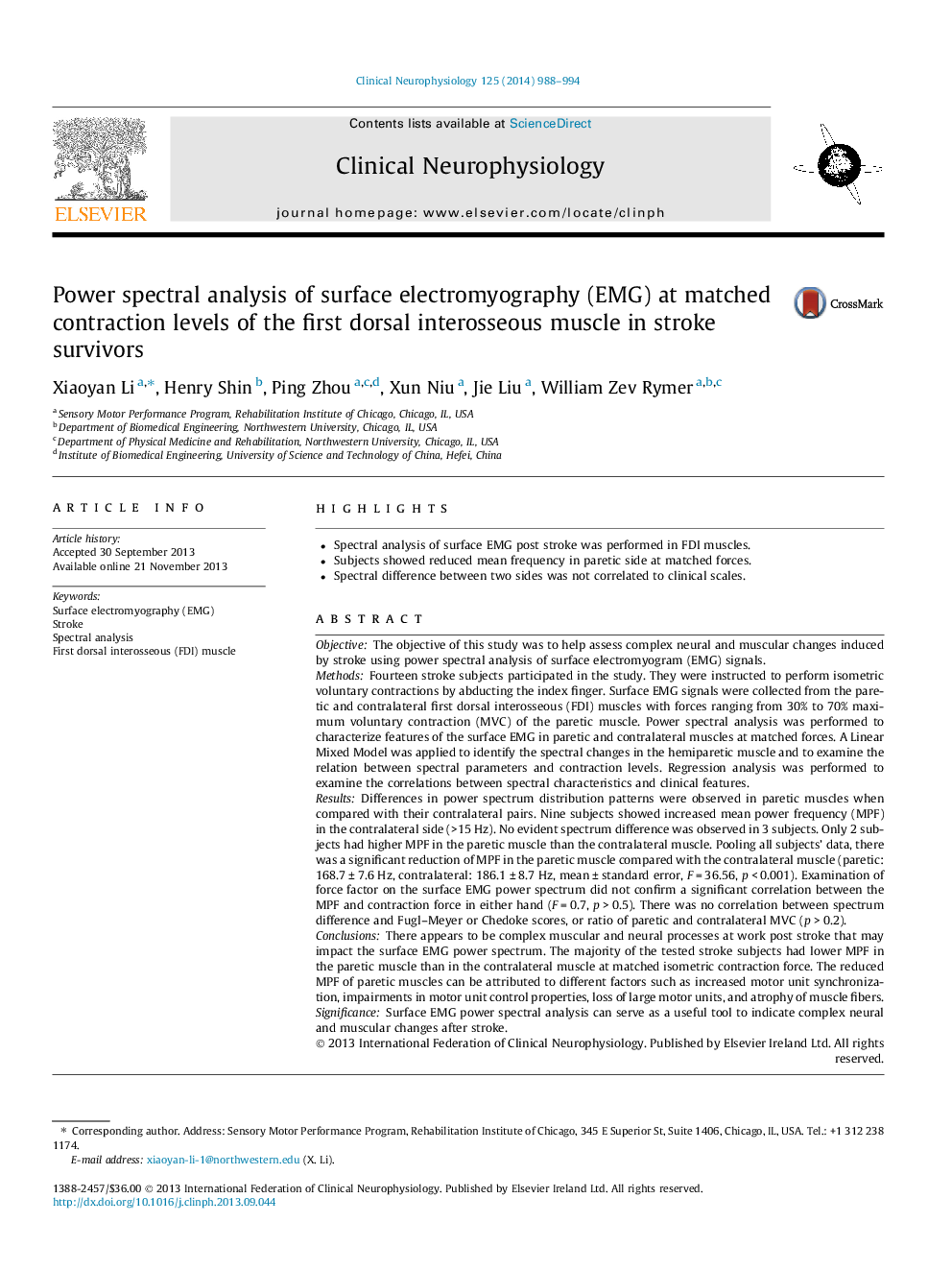| Article ID | Journal | Published Year | Pages | File Type |
|---|---|---|---|---|
| 3044083 | Clinical Neurophysiology | 2014 | 7 Pages |
•Spectral analysis of surface EMG post stroke was performed in FDI muscles.•Subjects showed reduced mean frequency in paretic side at matched forces.•Spectral difference between two sides was not correlated to clinical scales.
ObjectiveThe objective of this study was to help assess complex neural and muscular changes induced by stroke using power spectral analysis of surface electromyogram (EMG) signals.MethodsFourteen stroke subjects participated in the study. They were instructed to perform isometric voluntary contractions by abducting the index finger. Surface EMG signals were collected from the paretic and contralateral first dorsal interosseous (FDI) muscles with forces ranging from 30% to 70% maximum voluntary contraction (MVC) of the paretic muscle. Power spectral analysis was performed to characterize features of the surface EMG in paretic and contralateral muscles at matched forces. A Linear Mixed Model was applied to identify the spectral changes in the hemiparetic muscle and to examine the relation between spectral parameters and contraction levels. Regression analysis was performed to examine the correlations between spectral characteristics and clinical features.ResultsDifferences in power spectrum distribution patterns were observed in paretic muscles when compared with their contralateral pairs. Nine subjects showed increased mean power frequency (MPF) in the contralateral side (>15 Hz). No evident spectrum difference was observed in 3 subjects. Only 2 subjects had higher MPF in the paretic muscle than the contralateral muscle. Pooling all subjects’ data, there was a significant reduction of MPF in the paretic muscle compared with the contralateral muscle (paretic: 168.7 ± 7.6 Hz, contralateral: 186.1 ± 8.7 Hz, mean ± standard error, F = 36.56, p < 0.001). Examination of force factor on the surface EMG power spectrum did not confirm a significant correlation between the MPF and contraction force in either hand (F = 0.7, p > 0.5). There was no correlation between spectrum difference and Fugl–Meyer or Chedoke scores, or ratio of paretic and contralateral MVC (p > 0.2).ConclusionsThere appears to be complex muscular and neural processes at work post stroke that may impact the surface EMG power spectrum. The majority of the tested stroke subjects had lower MPF in the paretic muscle than in the contralateral muscle at matched isometric contraction force. The reduced MPF of paretic muscles can be attributed to different factors such as increased motor unit synchronization, impairments in motor unit control properties, loss of large motor units, and atrophy of muscle fibers.SignificanceSurface EMG power spectral analysis can serve as a useful tool to indicate complex neural and muscular changes after stroke.
